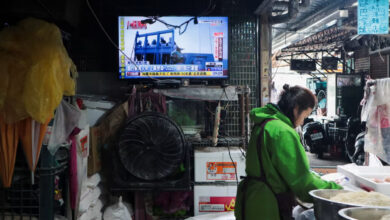
Financial markets that have been buffeted by the prospect of the first US interest rate hike in almost a decade are buckling up as the Federal Reserve begins meeting Wednesday to weigh its decision.
An uncommon debate has raged over whether the US central bank should go ahead with a quarter-point increase to the federal funds rate that would nevertheless mark a crucial break with the Fed's crisis stance since 2008.
By most assessments the US economy, with unemployment at 5.1 percent and moderate growth, is strong enough now that holding the rate at zero percent is no longer warranted.
The initial increase would likely begin a series of increases toward more "normal" levels around 3.0 percent over the next couple of years.
But to many economists, the slowdown of global economic activity, particularly in China, now poses a risk to US growth and an interest rate hike could set the economy back.
And many others say it could cause new problems in nervous global markets at just the wrong time.
The World Bank warned in a report Tuesday of a "perfect storm" of dangers, including a freeze in capital flows, for developing countries as the Fed tightens monetary policy.
"Given the substantial risks involved, they would do well to buckle their seatbelts in case the ride gets bumpy," said Carlos Arteta, lead economist in the Bank's Development Prospects Group.
The policy-setting Federal Open Market Committee, led by Fed Chair Janet Yellen, will meet on the issue Wednesday and Thursday, announcing their decision at 1800 GMT Thursday.
Then Yellen will undertake the delicate challenge of explaining the decision in a press conference, with whatever she says as crucial to markets as the decision itself.
Risks from China
The Fed has been signalling the coming rate rise since 2013 and Yellen has repeatedly said in recent months that it would probably come by year-end.
But the depth of China's problems — underscored by the August 11 devaluation of the yuan and the plunge in Chinese stocks — introduced new risks not only to other emerging economies but also, potentially, to the United States.
"The change in the circumstances which began with the Chinese devaluation is relatively new and we are still watching how it unfolds," Fed Deputy Chair Stanley Fischer said at the end of August.
Last week Andrew Levin, a Dartmouth economics professor who worked at the Fed for 20 years, argued that the US economy still harbors weaknesses that undermine the argument to increase interest rates.
Tightening policy at this point "would be a serious policy error," he said.
On the other hand, tired by all the talk while interest rates have already jumped and their currencies have fallen, some of the world's biggest emerging economies are pleading to end their agony and take the big step.
"It's preferable to have a move early on and advertised, a slow move up rather than the Fed be forced to tighten more significantly down the line," Indian central bank governor Raghuram Rajan said last month.
Even if the FOMC demurs this week, Yellen's forecast could still hold: they have two more meetings left in 2015, one at the end of October and one in mid-December.
Charles Collyns, chief economist at the Institute of International Finance, said that market volatility will persist in any case, because the US and British economies and central banks are moving in the opposite direction of much of the rest of the world.
"This divergence, together with growing divergence in economic growth between mature and emerging markets, will generate market uncertainty and volatility in the period ahead whatever the Fed decides on Thursday," Collyns said.




